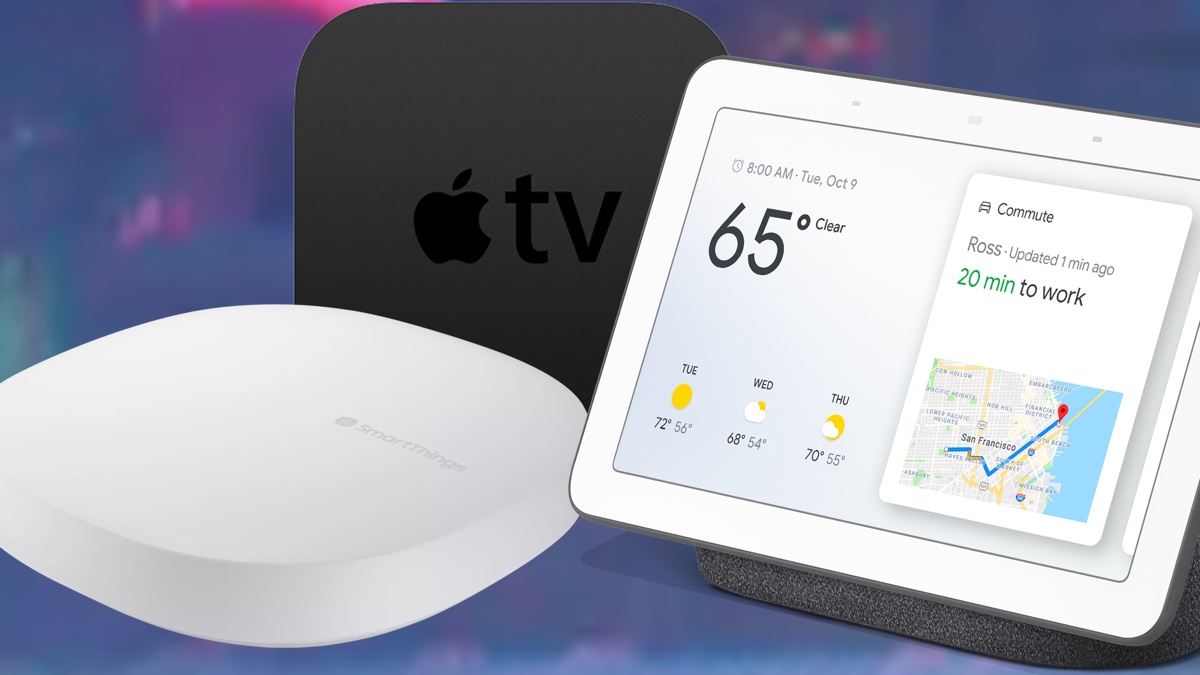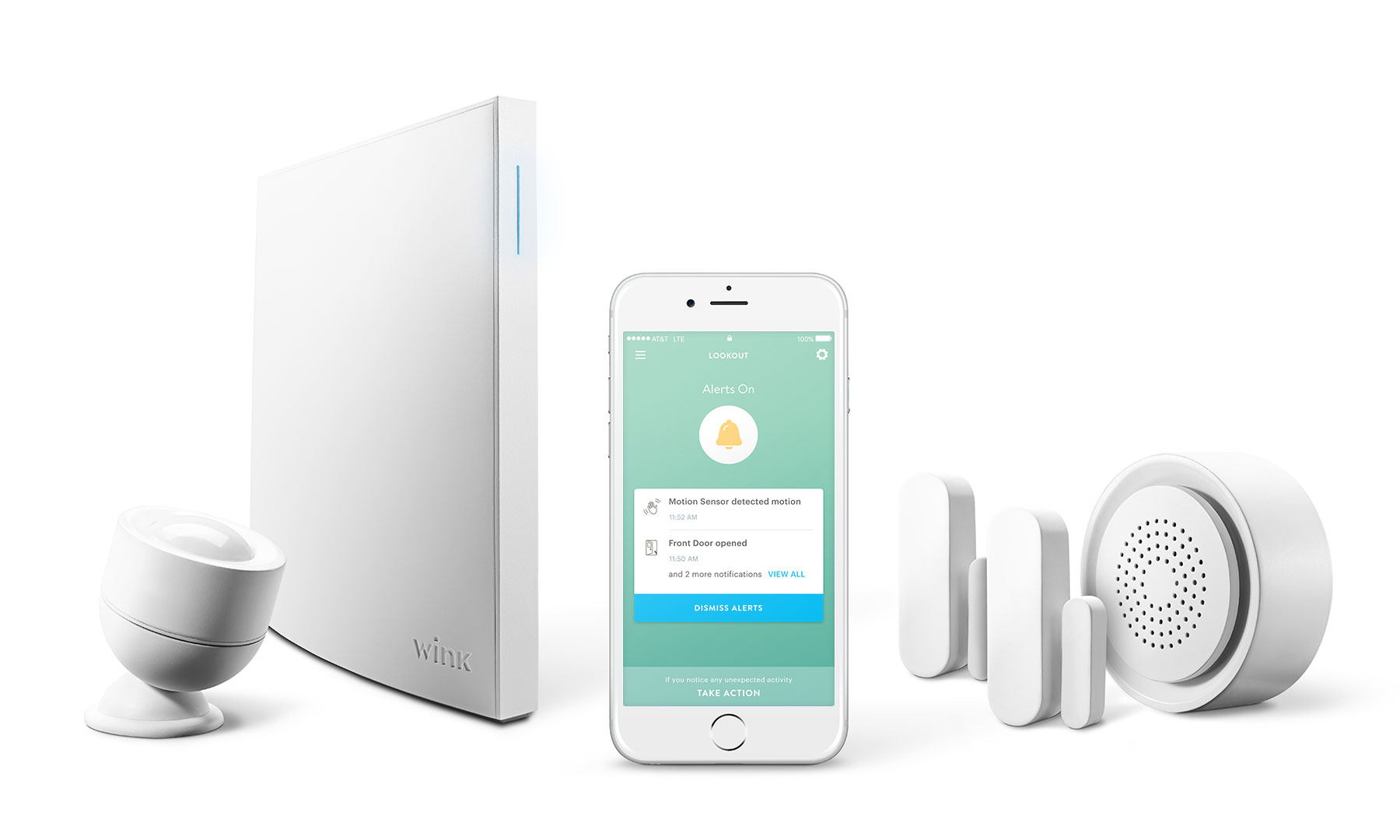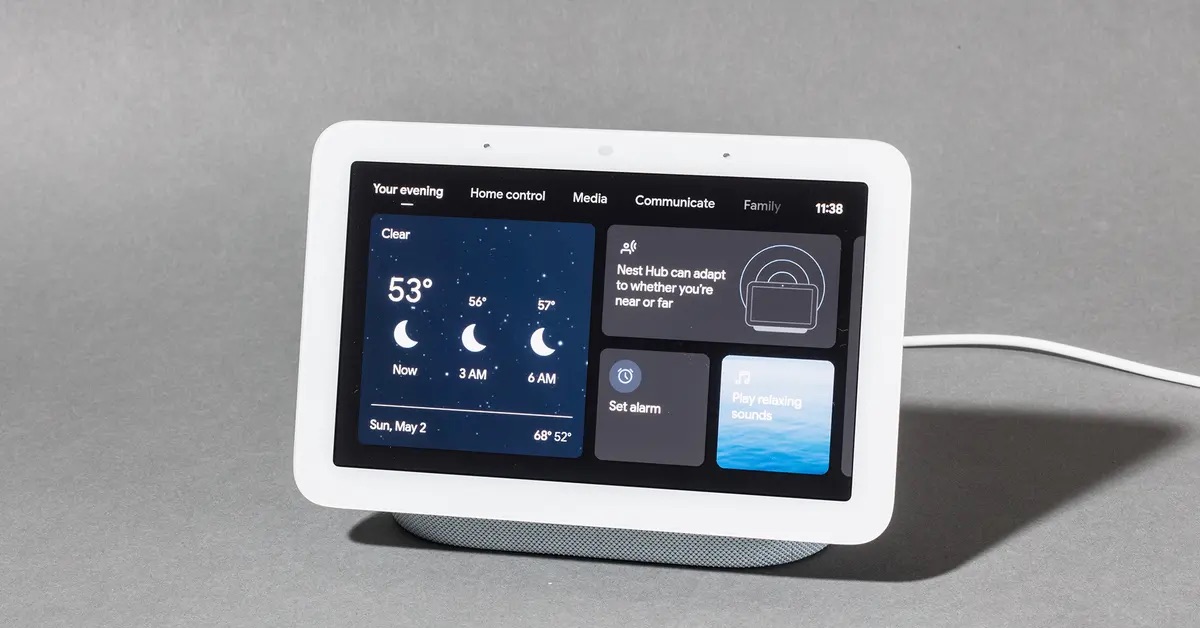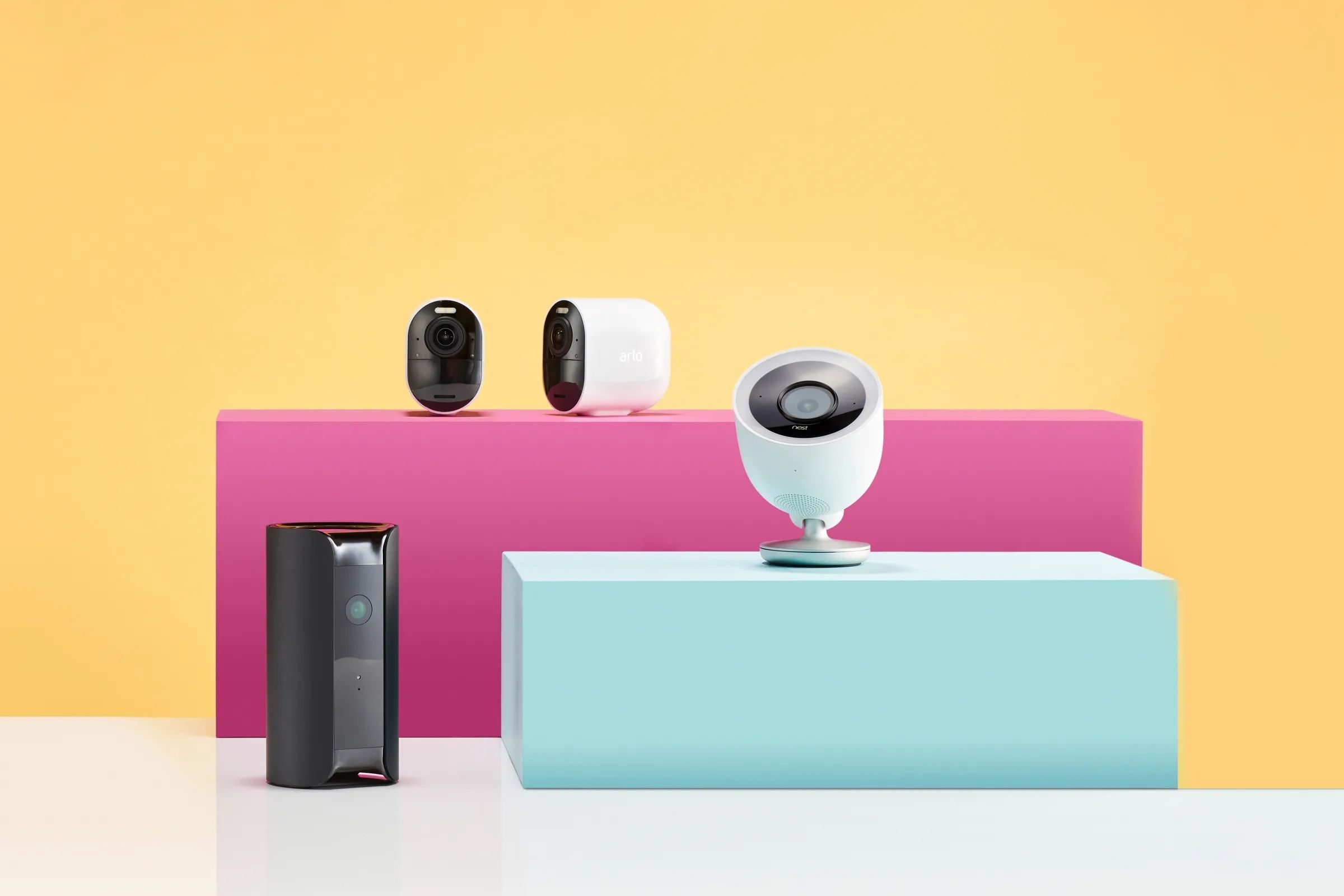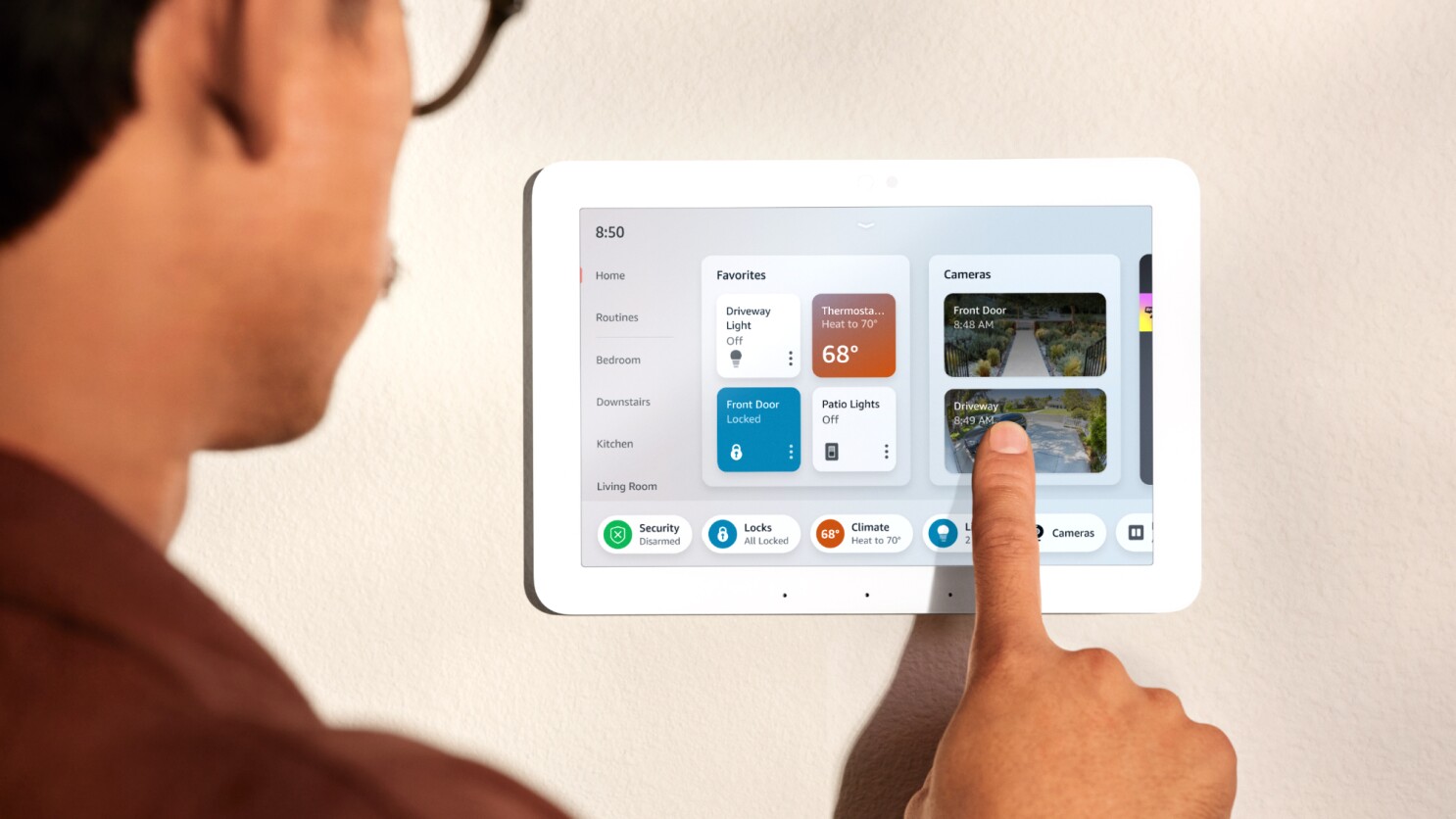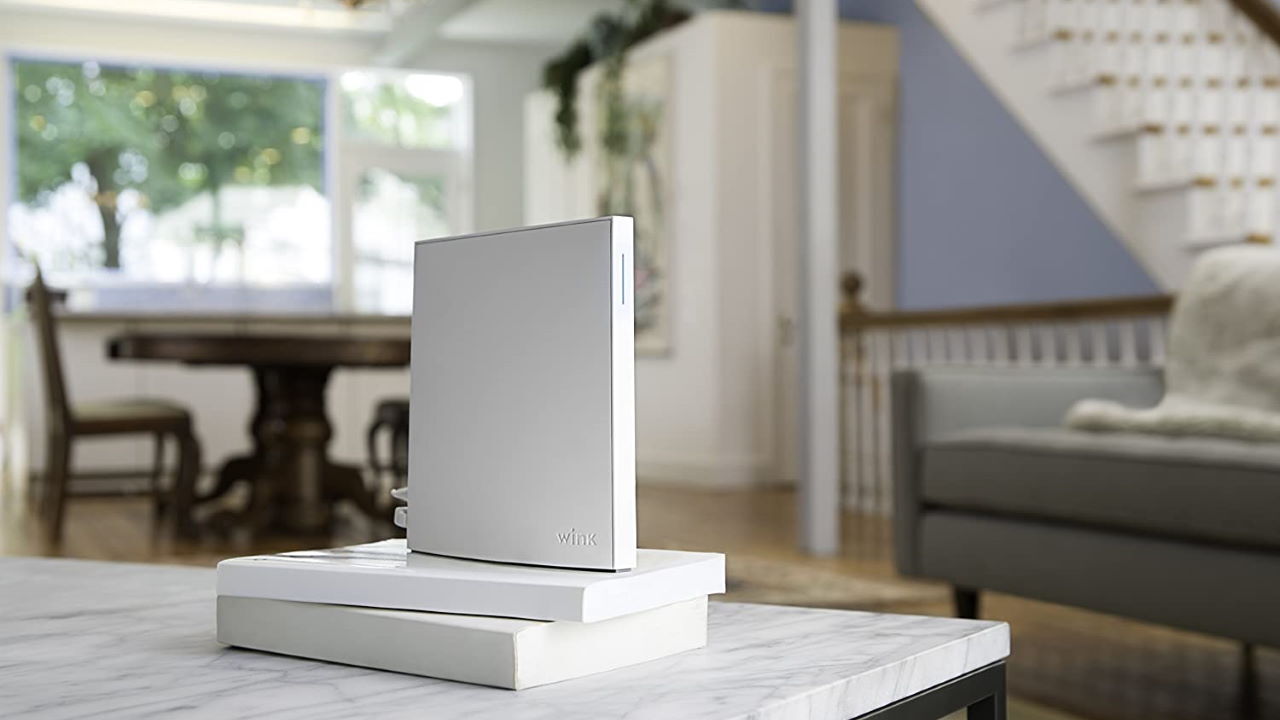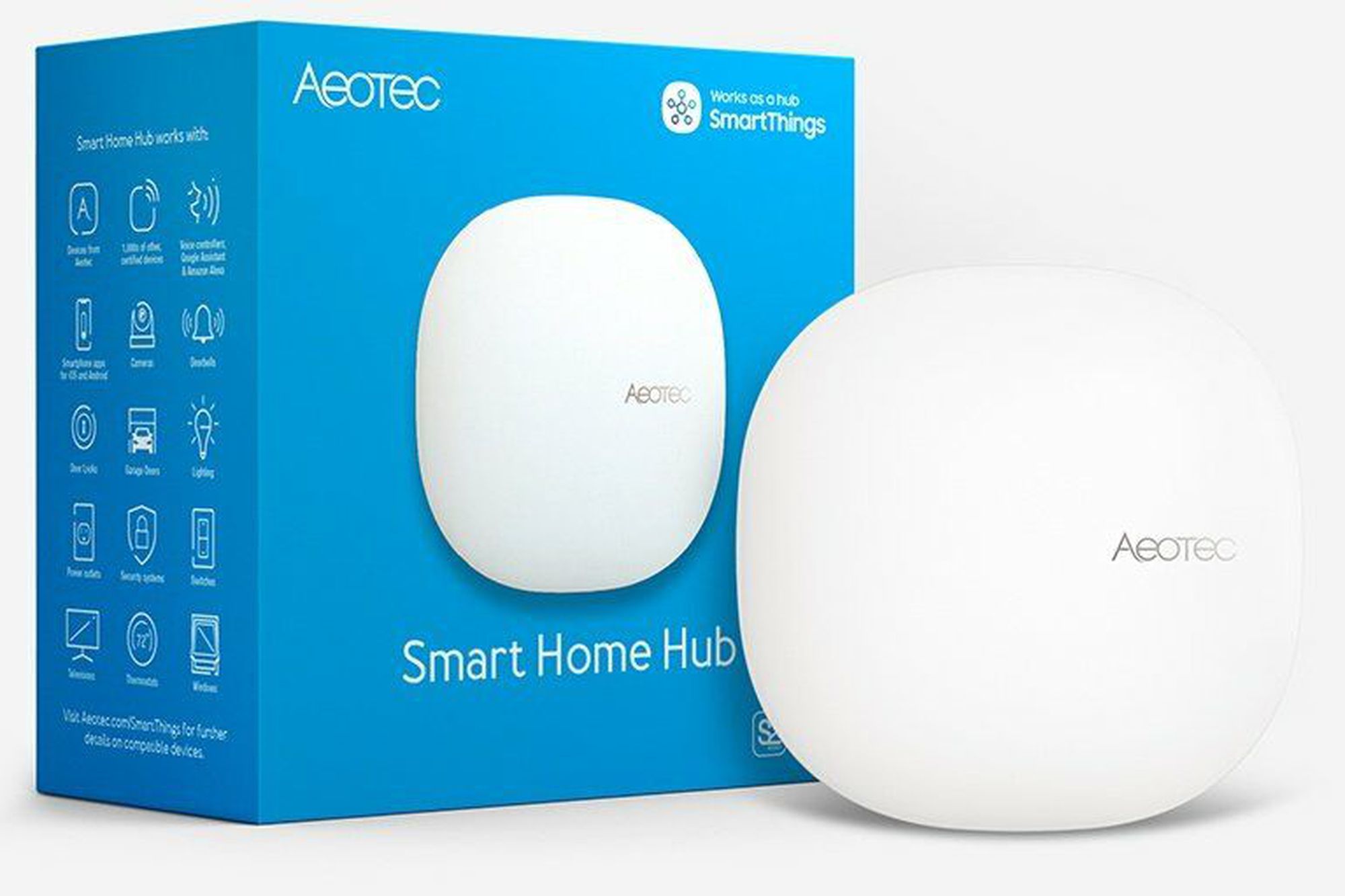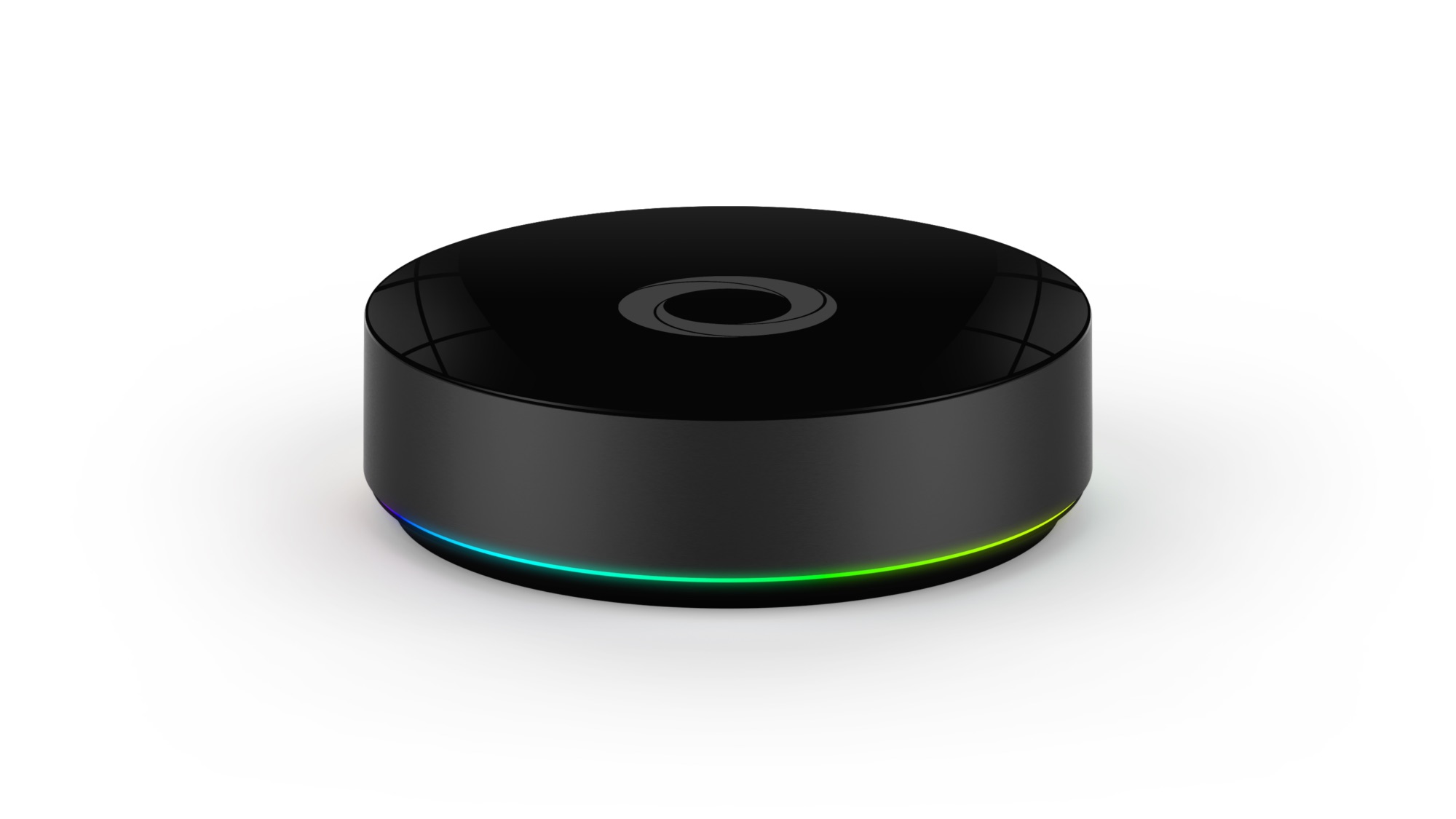Introduction
Welcome to the world of smart homes, where technology seamlessly integrates with our daily lives to make our homes more convenient, efficient, and secure. A key element of a smart home setup is a smart home hub. In this article, we will explore the world of smart home hubs and help you navigate through the options to find the best one for your needs.
So, what exactly is a smart home hub? Simply put, it is a central device that acts as the brain of your smart home ecosystem. It connects and controls various smart devices, allowing them to communicate with each other and be controlled through a single interface.
Having a smart home hub offers numerous benefits. One of the biggest advantages is the ability to control multiple devices with a single command or through automation. For example, you can use your voice to turn off the lights, lock the doors, and adjust the thermostat, all at once. This level of convenience and automation can significantly simplify daily tasks and enhance your overall living experience.
Another benefit of having a smart home hub is the ability to create customized routines and scenes. With a few taps or voice commands, you can set up routines for waking up, leaving the house, or going to bed, which can trigger a series of actions across your smart devices. For example, you can have your lights gradually dim, the thermostat adjust to a comfortable temperature, and your favorite playlist start playing, all automatically.
When it comes to choosing the right smart home hub for your needs, there are several factors to consider. Compatibility is crucial, as not all smart home devices work with every hub. It’s important to ensure that the hub you choose supports the devices you already have or plan to add to your smart home ecosystem.
Another factor to consider is the ease of use and user interface. A user-friendly hub with intuitive controls and a visually appealing interface can make managing your smart home a breeze. Additionally, consider the connectivity options, as some hubs rely solely on Wi-Fi, while others offer Bluetooth or Zigbee compatibility, which can extend the range of your smart devices.
Now that we have a basic understanding of smart home hubs and their benefits, let’s take a closer look at some of the most popular options on the market. In the following sections, we will explore the Amazon Echo Hub, Google Nest Hub, Apple HomePod mini, and Samsung SmartThings Hub, comparing their features and functionalities to help you make an informed decision.
What is a smart home hub?
In the world of smart homes, a smart home hub plays a crucial role in connecting and controlling various smart devices. It acts as the central command center, enabling seamless communication and integration among different devices and systems.
A smart home hub is essentially a hardware device that uses various wireless communication protocols, such as Wi-Fi, Bluetooth, or Zigbee, to connect to and control a wide range of smart devices. These devices can include smart lights, thermostats, locks, cameras, speakers, and much more.
One of the key features of a smart home hub is its ability to provide a unified interface for controlling multiple devices. Rather than using various individual apps or remotes, a smart home hub allows you to control all your connected devices through a single app or voice command.
Moreover, a smart home hub acts as a bridge between different devices that use different communication protocols. For example, if you have a smart light bulb that uses Zigbee and a smart speaker that uses Wi-Fi, the hub can facilitate communication between the two devices, ensuring seamless control and integration.
Aside from serving as a central control point, smart home hubs also enable automation and customization. With the help of a hub, you can create personalized routines and scenes, where multiple devices can work together in harmony based on your preset preferences. For instance, you can set up a “Good Morning” routine that gradually turns on the lights, adjusts the thermostat, starts playing your favorite music, and even brews a cup of coffee.
Furthermore, smart home hubs often provide advanced features like voice control. Many hubs are compatible with popular voice assistants such as Amazon Alexa, Google Assistant, or Apple Siri, allowing you to control your smart devices using just your voice. This hands-free convenience adds an extra layer of ease and accessibility to your smart home experience.
Overall, a smart home hub acts as the central nervous system of your smart home, connecting and coordinating various devices to create a seamless and intuitive smart home ecosystem. Whether you’re looking to enhance convenience, automate tasks, or create a personalized living environment, a smart home hub is an essential component that brings everything together.
Benefits of having a smart home hub
Having a smart home hub offers a plethora of benefits that can greatly enhance your living experience. Let’s explore some of the key advantages of incorporating a smart home hub into your home.
1. Centralized control: One of the primary benefits of a smart home hub is the ability to control multiple smart devices through a single interface. Instead of juggling between different apps or remotes, a hub allows you to manage and control all your connected devices from one convenient location. This centralized control simplifies operations and streamlines the management of your smart home ecosystem.
2. Automation and convenience: With a smart home hub, you can automate routine tasks and create custom scenes or routines. For instance, you can set up a “Goodnight” routine that turns off the lights, locks the doors, adjusts the thermostat, and arms the security system with just a simple voice command or a tap on your smartphone. Automation adds convenience to your daily life and eliminates the need for manual control of each device separately.
3. Integration and compatibility: A smart home hub serves as a bridge between different devices and communication protocols. It ensures that all your devices can seamlessly communicate and work together. Whether you have smart lights, thermostats, smart speakers, or security cameras, a smart home hub can unify them, allowing for greater integration and compatibility across your smart home ecosystem.
4. Enhanced security: Smart home hubs offer advanced security features to keep your home safe. For example, some hubs can monitor and detect unusual activities or security breaches, sending real-time alerts to your smartphone. Additionally, you can integrate security cameras, door/window sensors, and smart locks to create a comprehensive security system that can be easily controlled and monitored from your hub.
5. Energy efficiency: Smart home hubs enable effective energy management by allowing you to control and monitor the energy usage of your devices. You can set up schedules or use sensors to automatically adjust lighting, heating, and cooling systems based on occupancy or natural light levels. This not only helps reduce energy waste but also contributes to lower utility bills.
6. Voice control: Many smart home hubs are compatible with popular voice assistants such as Amazon Alexa, Google Assistant, or Apple Siri. This enables you to control your smart devices using voice commands, offering a hands-free and intuitive user experience. You can ask your hub to turn on the lights, play music, adjust the temperature, or even provide you with useful information.
7. Future-proofing: Investing in a smart home hub ensures that your home is ready for future advancements and compatibility. As technology evolves and new devices enter the market, a hub acts as a central hub for integrating and managing these new smart devices, keeping your home up to date with the latest innovations.
Overall, a smart home hub brings numerous benefits to your everyday life, ranging from convenience and automation to enhanced security and energy efficiency. By centralizing control and facilitating integration, a smart home hub transforms your home into a connected, intelligent, and futuristic living space.
Factors to consider when choosing a smart home hub
Choosing the right smart home hub for your needs is crucial in ensuring a seamless and efficient smart home experience. Here are some key factors to consider when selecting a smart home hub:
1. Compatibility: Compatibility is a critical factor to consider when choosing a smart home hub. Not all hubs support all smart devices or communication protocols. Before making a purchase, ensure that the hub you choose is compatible with the devices you already have or plan to add to your smart home ecosystem.
2. Communication protocols: Smart devices use different wireless communication protocols, such as Wi-Fi, Bluetooth, or Zigbee. It is essential to choose a hub that supports the communication protocols used by your devices. Some hubs support multiple protocols, allowing for greater flexibility and compatibility.
3. Ease of use: Consider the user interface and ease of use offered by the smart home hub. A hub with an intuitive and user-friendly interface, as well as easy device pairing and setup processes, can make managing your smart home a breeze. Look for features like clear instructions, responsive touchscreens, or easy-to-navigate mobile apps.
4. Connectivity: Different smart home hubs offer different connectivity options. While most hubs rely on Wi-Fi for communication, some also offer Bluetooth or Zigbee compatibility. Bluetooth and Zigbee connectivity can extend the range of your smart devices and improve their response time. Consider the connectivity options available and choose a hub that suits your specific needs.
5. Voice Assistant Compatibility: If you use voice assistants like Amazon Alexa or Google Assistant, ensure that the smart home hub you select is compatible with your preferred voice assistant. This compatibility allows you to control your smart devices using voice commands, enhancing the convenience and hands-free experience of your smart home setup.
6. Expandability: Consider the scalability and expandability of the smart home hub. Think about your future plans for your smart home ecosystem. Will you be adding more devices? Will you be integrating other systems like security or energy management? Ensure that the hub you choose can accommodate future expansion and support additional devices and functionalities.
7. Support and Updates: Look for a smart home hub that comes from a reputable brand with good customer support and a history of regular firmware updates. Updates are essential in ensuring compatibility with new devices and adding new features or bug fixes. A reliable support system is also crucial in case you encounter any technical issues or have questions about your smart home hub.
8. Budget: While it’s important to invest in a quality smart home hub, consider your budget as well. Smart home hubs can vary significantly in price, so determine how much you are willing to spend and look for options within that range. Keep in mind that higher-priced hubs may offer more advanced features and better overall performance.
By considering these factors, you can make an informed decision when choosing a smart home hub that perfectly fits your needs and preferences. A well-selected hub will serve as the foundation for your smart home ecosystem, enabling seamless connectivity, control, and automation of your smart devices.
Popular smart home hubs on the market
With the growing popularity of smart home technology, several smart home hubs have emerged on the market. Here, we will explore some of the most popular options available:
1. Amazon Echo Hub: The Amazon Echo Hub, powered by Amazon’s voice assistant Alexa, is one of the most popular smart home hubs. It offers seamless integration with a wide range of smart devices and allows you to control them using voice commands. The Echo Hub features a built-in speaker, making it a versatile device for not only controlling your smart home but also playing music and accessing Alexa’s extensive range of skills.
2. Google Nest Hub: The Google Nest Hub, formerly known as Google Home Hub, is another popular choice among smart home enthusiasts. It is powered by Google Assistant and offers a user-friendly interface to manage your smart home devices. The Nest Hub features a 7-inch touchscreen display, providing visual feedback and enhancing the overall user experience. It offers seamless integration with other Google services, such as Google Calendar and Google Photos, making it a hub that can assist with various tasks beyond just controlling your smart home devices.
3. Apple HomePod mini: Apple’s entry into the smart home hub market, the HomePod mini, is a compact and stylish option for Apple ecosystem enthusiasts. It is powered by Apple’s voice assistant Siri and seamlessly integrates with other Apple devices, such as iPhone, iPad, and Apple TV. The HomePod mini delivers high-quality audio performance and offers smart home control through voice commands. With its enhanced privacy features and focus on audio quality, the HomePod mini is an appealing choice for Apple loyalists.
4. Samsung SmartThings Hub: The Samsung SmartThings Hub is a versatile hub that supports various smart devices and communication protocols. It offers compatibility with popular smart home devices from different manufacturers, making it a flexible and expandable option. The SmartThings Hub allows you to control and monitor your smart home devices through the SmartThings app, which offers a simple and intuitive user interface.
5. Hubitat Elevation: Hubitat Elevation is a smart home hub that emphasizes local control and privacy. It operates offline, meaning it does not rely on cloud services for most functions, enhancing security and reliability. The Hubitat Elevation supports a wide range of smart devices and allows for advanced automation and customization. It offers a hub-local dashboard for easy device control and offers a degree of independence from internet connectivity.
These are just a few examples of popular smart home hubs on the market, each with its own unique features and capabilities. When choosing a smart home hub, consider factors such as compatibility, ease of use, voice assistant integration, and expandability to find the hub that best suits your specific needs and preferences.
Amazon Echo Hub
The Amazon Echo Hub, powered by Amazon’s voice assistant Alexa, is a leading smart home hub that offers a wide range of features and seamless integration with various smart devices.
One of the standout features of the Amazon Echo Hub is its voice control capabilities. With a simple voice command, you can control your smart home devices, play music, get weather updates, set reminders, and much more. The integration with Alexa allows for a hands-free and intuitive user experience.
The Echo Hub serves as a central hub for managing your smart devices. Through the Alexa app, you can easily add and control devices from different manufacturers. It supports a vast ecosystem of compatible devices, including smart lights, locks, thermostats, cameras, and entertainment systems, providing you with a wide range of options to create a seamless smart home experience.
Furthermore, the Echo Hub offers advanced features like multi-room audio, allowing you to synchronize music playback across multiple Echo speakers in various rooms. You can create speaker groups or use the hub as a smart speaker to play your favorite music, audiobooks, or podcasts throughout your home.
The Amazon Echo Hub also provides access to a wide range of Alexa skills, which are essentially voice-activated apps that can be used to perform various tasks. These skills range from controlling specific smart device functionalities to accessing news, recipes, and even playing interactive games. The expanding collection of Alexa skills ensures that the Echo Hub offers endless possibilities to enhance your smart home experience.
In terms of hardware, the Echo Hub comes in various models, including the Echo Dot, Echo, and Echo Show, each with its own unique features and form factors. These devices range from compact voice-only models to those with built-in screens, expanding their capabilities beyond just voice control.
Moreover, the Echo Hub integrates with other Amazon services, such as Amazon Prime Music and Amazon Prime Video, allowing for seamless media streaming and access to a vast library of content. The integration with Amazon services ensures a unified user experience, enabling easy access to your favorite entertainment content through voice commands.
With its extensive device compatibility, advanced voice control, and integration with Amazon services, the Amazon Echo Hub offers a compelling choice for users looking to create a smart home ecosystem. Whether you’re starting from scratch or expanding an existing setup, the Echo Hub’s versatility and extensive capabilities make it an excellent choice for enhancing your smart home experience.
Google Nest Hub
The Google Nest Hub, formerly known as Google Home Hub, is a popular smart home hub that offers seamless integration with various smart devices and delivers a range of features to enhance your smart home experience.
A standout feature of the Google Nest Hub is its intuitive user interface combined with a visually appealing display. The hub features a vibrant touchscreen display, ranging from 7 to 10 inches, providing visual feedback and allowing for easy navigation and control of your connected devices. The touchscreen display adds an extra layer of interactivity and convenience, making it simple to manage your smart home ecosystem.
The Nest Hub is powered by Google Assistant, which enables easy voice control and access to a wide range of services and information. With just a simple voice command, you can control your smart devices, play music, check the weather, and ask questions. The integration with Google Assistant ensures a more personalized and responsive user experience.
Beyond its role as a smart home hub, the Nest Hub seamlessly integrates with other Google services, such as Google Calendar, Google Photos, and YouTube. You can easily access your calendar, view and share your photos, watch YouTube videos, and even stream content to your Chromecast-enabled devices directly from the Nest Hub, providing a unified ecosystem for your digital life.
The Nest Hub also offers the popular feature of personalized routines, where you can create custom routines that can be triggered by a single command or at specific times. For example, you can set up a routine called “Good Morning,” which can turn on the lights, adjust the thermostat, play the news, and display your daily calendar events, all with a single voice command or tap on the screen.
Additionally, the Nest Hub can serve as a digital photo frame, displaying your favorite images from Google Photos when not in use. You can even use the voice command to display specific albums or moments, adding a personal touch to your home decor.
Furthermore, the Nest Hub offers compatibility with a wide range of smart devices, including lights, thermostats, cameras, and more. It supports popular smart home protocols, such as Wi-Fi and Zigbee, allowing for seamless integration and control of your smart devices.
With its intuitive touchscreen interface, Google Assistant integration, and seamless compatibility with other Google services, the Google Nest Hub offers a comprehensive smart home hub solution. Whether you are managing your smart devices, enjoying media content, or staying organized, the Nest Hub delivers a user-friendly and visually immersive experience for your smart home ecosystem.
Apple HomePod mini
The Apple HomePod mini is a compact and powerful smart home hub that brings Apple’s renowned ecosystem to your smart home experience.
With its sleek design and small form factor, the HomePod mini can seamlessly fit into any room and blend into your home decor. It is powered by Apple’s voice assistant Siri, providing a hands-free and intuitive way to control your smart home devices with just your voice.
One of the key features of the HomePod mini is its seamless integration with other Apple devices. It works seamlessly with your iPhone, iPad, and Apple TV, allowing you to simply ask Siri to control your devices or play media across multiple devices simultaneously.
The HomePod mini delivers impressive audio quality, considering its size, providing rich and balanced sound. It utilizes computational audio to optimize audio output based on the room’s acoustics, ensuring an immersive listening experience.
HomePod mini offers exceptional privacy features. Unlike many other smart home hubs, the HomePod mini processes most commands locally on the device itself, enhancing privacy and security. Apple’s commitment to privacy ensures that your personal information remains protected.
With the HomePod mini, you can control a wide range of smart home devices, including lights, thermostats, locks, and more, through voice commands or the Home app on your Apple device. The HomePod mini acts as a central hub, allowing you to conveniently manage and automate your connected devices.
Furthermore, the HomePod mini supports multi-room audio and stereo pairing, enabling you to create a cohesive sound experience throughout your home. You can have synchronized music playing in multiple rooms or create a stereo pair for a more immersive audio experience.
The HomePod mini also serves as a hub for HomeKit, Apple’s smart home platform. It allows you to set up advanced automations and control your smart devices remotely, providing a convenient way to manage your smart home even when you’re away.
In addition to its smart home capabilities, the HomePod mini can also perform tasks such as answering questions, setting reminders, managing your calendar, and playing music, offering a range of functions beyond just controlling your smart home ecosystem.
Overall, the Apple HomePod mini is a powerful and compact smart home hub that seamlessly integrates with the Apple ecosystem and delivers excellent audio quality. With its privacy-focused approach, compatibility with Apple devices, and efficient smart home control, the HomePod mini is an appealing choice for Apple enthusiasts looking to enhance their smart home experience.
Samsung SmartThings Hub
The Samsung SmartThings Hub is a versatile and popular smart home hub that offers seamless integration with various smart devices, making it an excellent choice for those looking to create a connected and intelligent home.
One of the key features of the SmartThings Hub is its compatibility with a wide range of smart devices from different manufacturers. Whether you have smart lights, locks, thermostats, or cameras, the hub acts as a central control point, allowing you to manage and control all your devices through the SmartThings app.
The SmartThings Hub supports popular wireless communication protocols, including Wi-Fi, Zigbee, and Z-Wave, ensuring seamless connectivity and compatibility with a broad range of smart devices. This flexibility allows you to choose from a wide variety of smart devices and expand your ecosystem as needed.
The SmartThings app provides an intuitive and user-friendly interface for managing and controlling your smart home devices. It offers features like device grouping, automation, and scheduling, giving you the ability to create customized routines and scenes to suit your preferences.
In addition to its compatibility with various devices, the SmartThings Hub can also integrate with other Samsung smart home products, such as refrigerators, washing machines, and televisions. This integration allows for enhanced automation and control over your entire home ecosystem.
The SmartThings Hub offers excellent security features, allowing you to monitor and control your security devices, such as cameras and door/window sensors, through the SmartThings app. You can receive real-time notifications and quickly respond to any security events, ensuring the safety and peace of mind for you and your family.
Another advantage of the SmartThings Hub is its ability to work offline. Even if your internet connection goes down, the hub can still operate locally and control your connected devices, ensuring that you maintain control over your smart home, even during internet outages.
Moreover, the SmartThings Hub integrates with popular voice assistants like Amazon Alexa and Google Assistant, enabling you to control your smart devices using voice commands. This adds an extra layer of convenience and hands-free control to your smart home experience.
With its extensive device compatibility, user-friendly interface, robust security features, and voice assistant integration, the Samsung SmartThings Hub provides a versatile and reliable hub for managing your smart home ecosystem. Whether you’re a beginner or an experienced smart home enthusiast, the SmartThings Hub offers a solid foundation for creating a connected and seamlessly integrated smart home.
Comparison of smart home hubs
When choosing a smart home hub, it’s important to compare the features and capabilities of different options to find the one that best suits your needs. Here, we compare some key aspects of popular smart home hubs to help you make an informed decision:
Compatibility: All smart home hubs offer compatibility with various devices, but it’s crucial to ensure that the hub supports the specific devices and communication protocols you plan to use in your smart home ecosystem. Consider whether the hub integrates with the devices you already own or plan to purchase.
User Interface: Evaluate the user interface of each hub, both in terms of the control interface (voice commands, touchscreen, mobile app) and the overall user experience. Look for a hub with an intuitive and user-friendly interface that suits your preferences.
Connectivity: Different smart home hubs offer varying connectivity options. While most rely on Wi-Fi for communication, some also support Bluetooth or Zigbee, which can extend the range and enhance the reliability of your smart devices. Consider your specific connectivity needs and choose a hub accordingly.
Voice Assistant Integration: Many smart home hubs feature integration with popular voice assistants like Amazon Alexa, Google Assistant, or Apple Siri. Voice control adds convenience and hands-free operation to your smart home. Ensure that the hub you choose is compatible with your preferred voice assistant.
Automation and Customization: Evaluate the automation and customization capabilities of each hub. Look for features like creating routines, scenes, or schedules to streamline and personalize your smart home experience. Consider the level of customization offered by each hub to match your specific needs.
Security: Smart home security is essential, so compare the security features offered by each hub. Consider if the hub has built-in security features like monitoring, notifications, and encryption. Additionally, evaluate how the hub handles and stores your personal data to prioritize privacy and data protection.
Expandability: Look for a smart home hub that allows for future expansion and scalability. Consider whether the hub offers support for new devices and functionalities. Ensuring that the hub can accommodate future upgrades and additions to your smart home ecosystem is important for long-term usability.
Price: Compare the prices of different smart home hubs to find one that fits your budget. Take into account the features, capabilities, and brand reputation to determine the overall value for money.
By considering these factors, you can compare and contrast different smart home hubs to find the one that best aligns with your specific needs, preferences, and budget. It’s important to choose a hub that provides compatibility with your devices, offers a user-friendly interface, and supports the features and functionalities that enhance your smart home experience.
Conclusion
Choosing the right smart home hub is essential for creating a connected and efficient smart home ecosystem. By considering factors such as compatibility, user interface, connectivity, voice assistant integration, automation capabilities, security, expandability, and price, you can find the hub that best suits your needs and preferences.
The Amazon Echo Hub, with its extensive device compatibility, voice control capabilities, and integration with Amazon services, offers a comprehensive solution for those seeking a versatile and user-friendly smart home hub.
The Google Nest Hub, with its intuitive touchscreen interface, Google Assistant integration, and seamless compatibility with other Google services, provides an immersive and visually appealing smart home hub experience.
The Apple HomePod mini, with its sleek design, powerful audio performance, and seamless integration with Apple devices and services, caters to Apple enthusiasts looking for a compact yet capable smart home hub.
The Samsung SmartThings Hub offers versatility and compatibility with a wide range of devices, providing a robust and reliable hub for managing and controlling your smart home ecosystem.
After comparing the features and capabilities of different smart home hubs, it’s important to select the one that aligns with your specific needs, preferences, and budget. Each hub has its own unique strengths and advantages, and the choice ultimately depends on your personal requirements and ecosystem preferences.
Regardless of the hub you choose, incorporating a smart home hub into your living space can significantly enhance your daily life. With centralized control, automation capabilities, and integration with voice assistants, a smart home hub helps streamline tasks, increase convenience, and create a seamless and intelligent living environment.
Take the time to research and explore the available options, considering the specific features and functionalities that matter most to you. With the right smart home hub, you can unlock the full potential of your smart devices and transform your house into a truly connected and smart home.







